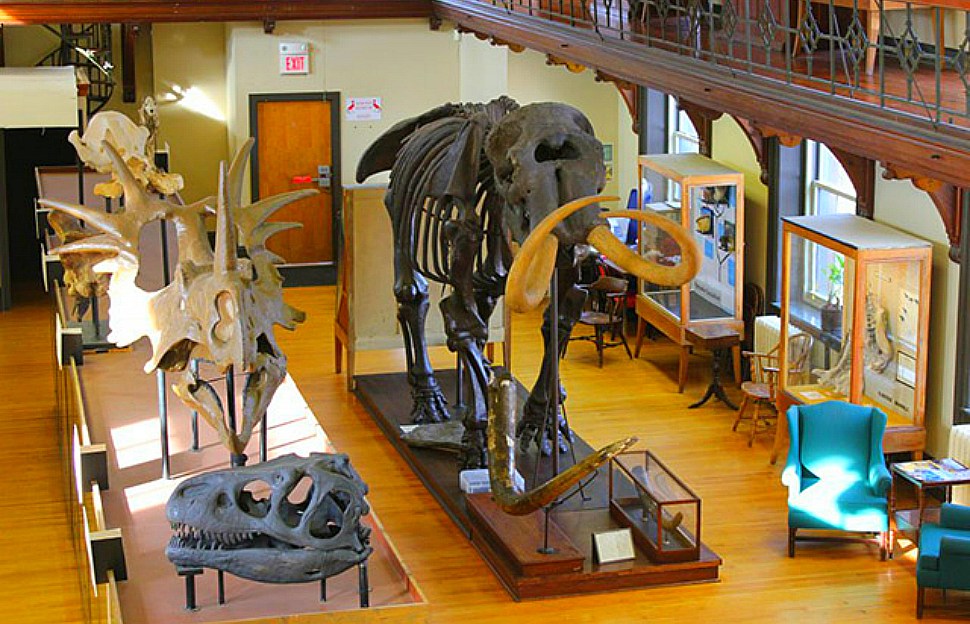John Tolley, July 15, 2017
B1G Museums
The 14 universities of the Big Ten Conference are home to some of the finest museums, special collections and libraries in the nation. From musical oddities to ancient artifacts, the B1G Museums series is your carefully curated guide to the archives and exhibits, great and small, which help make these universities outstanding. Join us as we journey across 14 campuses and inside the institutions that make us so proud to LiveB1G
Rutgers Geology Museum
Today, people in New Jersey speak of the legendary Jersey Devil, a famed cryptid that lurks in the state?s Pine Barrens region. But millions of years ago a real devil roamed prehistoric New Jersey; a long-necked, fleet-of-foot carnivorous dinosaur called the Grallator.
How do we know so much about the Grallator?s whereabouts while the other Jersey Devil remains relegated to folklore? From fossilized footprints the creature left behind which can be seen on display at the Rutgers University Geology Museum.
Formally founded in 1872 by State Geologist and Rutgers professor George H. Cook, the museum?s core collection began to take shape nearly four decades earlier. In 1836, Professor Lewis C. Beck contributed an assemblage of items, including Native American artifacts, minerals and fossils, among them the aforementioned Grallator tracks.
Cook?s desire to stir the public?s interest in Rutgers? scientific endeavors was further aided by a 1940 gift of 2,400 fluorescent mineral samples from the New Jersey Zinc Company. These rare minerals are native to New Jersey and illuminate the state?s geological and industrial past.
Visitors today can gaze upon the remains of a giant spider crab, a mastodon, even a 2,400 year old Ptolemaic-era Egyptian mummy. Students in grades K-12 can participate in a number of educational outreach programs that allows them to dive deep into the wonders of the natural world. And, members of the public can mingle with geologists and curators at the annual open house.
Just remember to watch out for the Jersey Devil.







 See what's coming up live on B1G+ every day of the season at BigTenPlus.com.
See what's coming up live on B1G+ every day of the season at BigTenPlus.com. 